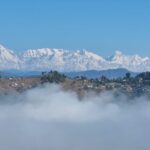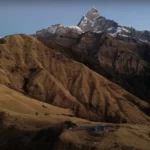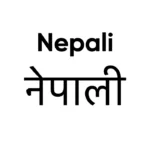Nepal is a country located in the southern Himalayas. It is bordered by China to the north and India to the south. Nepal has a population of approximately 26 million people and is the world’s 93rd largest country by land area. The official language of Nepal is Nepali (Nepalese), however, many other languages are spoken throughout the country. The currency of Nepal is the Nepalese rupee.
Nepal is a land of mountains and valleys. The Himalayan mountains make up a large part of the country, and eight of the world’s ten tallest mountains are located in Nepal. Mount Everest, the tallest mountain in the world, is also located in Nepal.
Religion
Nepal is a culturally and religiously diverse country, with Hinduism and Buddhism being the two main religions. There are also smaller groups of Christians, Muslims, and Sikhs. 2. Ethnic groups
There are over 100 different ethnic groups in Nepal, each with its own unique customs and traditions. The major groups include the Sherpas, Tamangs, Gurungs, and Tharus. 3. Languages
Nepal has over 60 different languages spoken within its borders. The official language is Nepali, but English is also widely spoken. 4. Festivals
Nepal has many festivals throughout the year, celebrating everything from religious holidays to the changing of the seasons. Some of the most popular festivals include Dasain.
History
Nepal is a country with a long and rich history. For centuries, Nepal was ruled by a monarchy, and the king was considered to be a god. In the early 1900s, Nepal was declared a republic, and the king was deposed. Nepal has been through a lot of political turmoil in recent years, but the Nepalese people are proud of their history and culture.
Greatly influenced by Hinduism and Buddhism, the Nepalese people are very hospitable and generous. They believe in treating guests well and will often go out of their way to help someone in need.
Language
Nepal has over 100 different languages spoken throughout the country. However, Nepali is the national language and is spoken by the majority of the population. English is also widely spoken, especially in larger cities and among the educated population.
Nepali is a member of the Indo-Aryan family of languages and is closely related to Hindi. It is written in Devanagari script, which is also used to write Hindi, Sanskrit, and Marathi. Nepal adopted Devanagari as its official script in 2008.
Nepal is a culturally rich and diverse country. There are many different ethnic groups with their own unique traditions and customs. The Nepalese people are warm and welcoming, and the country.
Food
Nepalese cuisine is as varied as the country’s geography and ethnicity. There are over 100 different ethnic groups in Nepal, each with its own traditional dishes. Nepalese food is largely influenced by Indian and Tibetan cuisines. Common staples include rice, lentils, and vegetables. Meat is not as commonly eaten, but chicken, mutton, and yak are popular dishes. Nepalese food is often very spicy, so be sure to ask about the level of spiciness before ordering. 5. Clothing
The traditional clothing for men in Nepal is the dhoti, a long piece of cloth that is wrapped around the waist and legs. Women typically wear the sari, a long piece of cloth that is draped over.
Festivals
Nepal is home to a wide variety of festivals throughout the year. From the big three of Dashain, Tihar, and Holi, to small local festivals celebrating the changing of the seasons, there is always something to celebrate. Nepalese culture is rich and vibrant, and the festivals reflect that.
Dashain, Tihar, Losar
Nepalese culture is unique and fascinating. Here are a few things you may not know about it:
- Dashain is the biggest and most important festival in Nepal. It lasts for 15 days and is celebrated in October/November. It is a time for family and friends to get together and celebrate the victory of good over evil.
- Tihar is another major festival in Nepal. It lasts for five days and is celebrated in November/December. It is a time to celebrate the relationship between humans and animals, namely, Cow, Crow, and Dog.
- 3. Losar is the Nepalese New Year, which falls in February/March.







